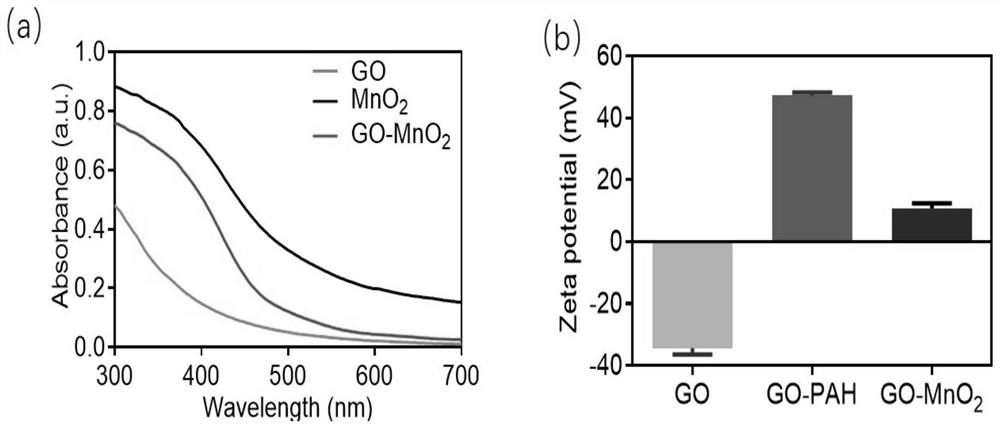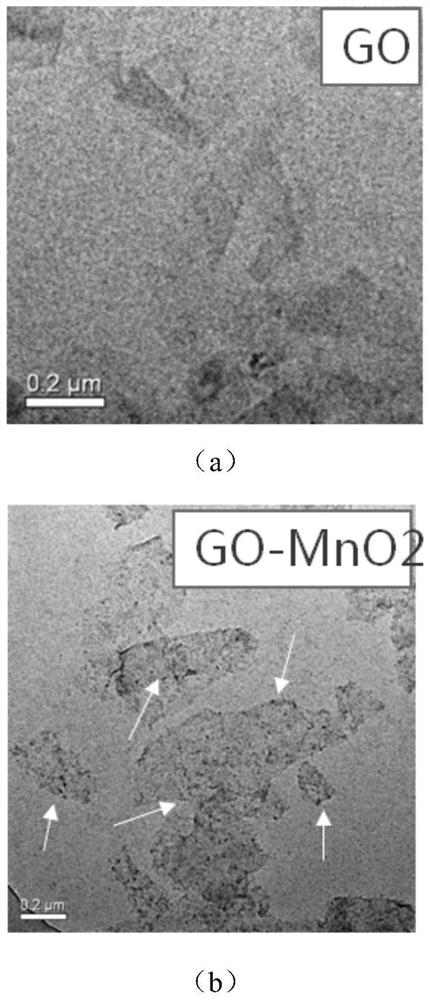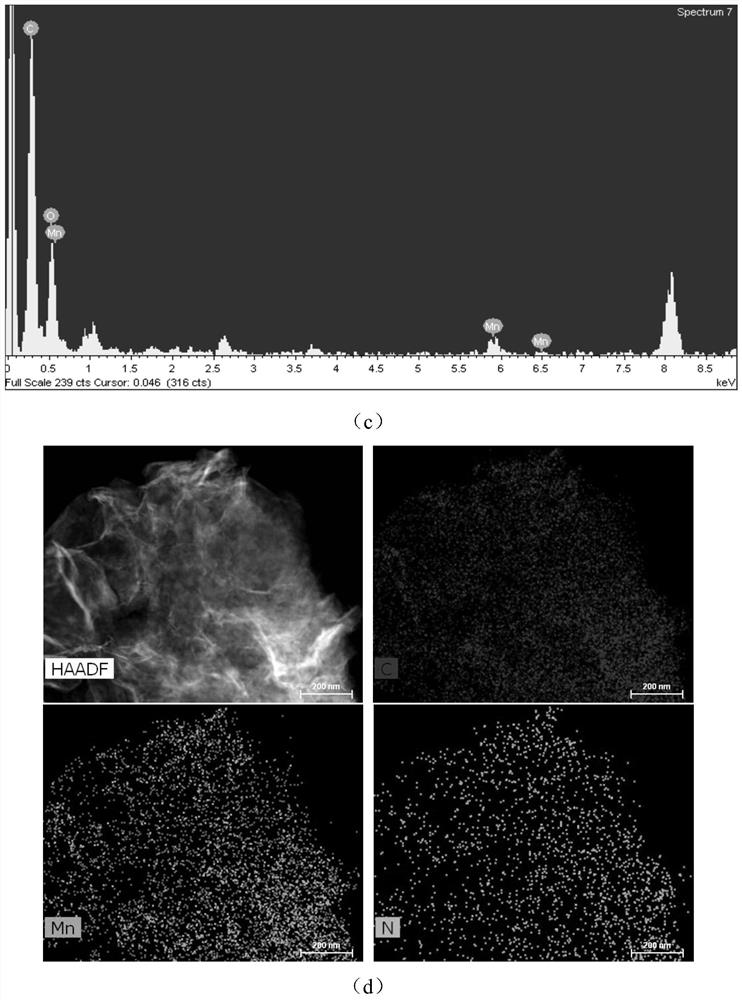Tumor in-situ oxygen production sensitization photodynamic curative effect targeting penetration type nanometer diagnosis and treatment compound and preparation method thereof
A nano-composite, penetrating technology, applied in the field of medical materials
- Summary
- Abstract
- Description
- Claims
- Application Information
AI Technical Summary
Problems solved by technology
Method used
Image
Examples
Embodiment 1
[0044] A target-penetrating nanotherapeutic complex for in situ oxygen generation and enhanced photodynamic therapy of tumors, including GO-MnO based on graphene oxide 2 Composite oxygen-generating carrier,
[0045] The tumor-targeted homing penetrating peptide linked to the composite oxygen-generating carrier by chemical covalent linkage, and the peptide linked to the composite oxygen-generating carrier by π-π stacking, hydrophobic force, hydrogen bond or electrostatic interaction Photosensitizer, the specific preparation process is as follows:
[0046] The first step, synthesis of GO-MnO 2 Composite oxygen-generating carrier
[0047] 1 mL of poly(allylamine hydrochloride) (PAH) solution (concentration: 1 mg / mL) was added dropwise to 2 mL of graphene oxide solution (concentration: 0.5 mg / mL) under magnetic stirring conditions, and reacted overnight to obtain GO -PAH complex; 1mL potassium permanganate solution (8.4mg / mL) was added dropwise to the GO-PAH complex, stirred ov...
Embodiment 2
[0062] Example 2 GM@tLyP-1 / Ce6 In Vitro Oxygen Production, Singlet Oxygen Production Rate and MRI Imaging Performance Test
[0063] The performance of the target-penetrating nano-diagnosis and treatment compound prepared by the present invention is mainly evaluated by the following methods:
[0064] 1. Characterization of oxygen production performance
[0065] An equal amount of 100 mg of GM@tLyP-1 / Ce6 solution was reacted with 100 μM hydrogen peroxide solution at pH 6.5 and 7.4 respectively, and a blank control group was set. Use the JPBJ-608 portable dissolved oxygen analyzer to detect the oxygen content of the solution every 10s.
[0066] Such as Figure 6 a, in H 2 o 2 Solution (100μM)+GM@tLyP-1 / Ce6 group can quickly trigger the reaction to produce O 2 , and the rate of oxygen production increases significantly with the increase of acidity, which proves that the GM@tLyP-1 / Ce6 nanocomposite has a good oxygen production effect.
[0067] 2. Characterization of active ox...
Embodiment 3
[0074] Example 3 GM@tLyP-1 / Ce6 in vitro cytotoxicity, targeted endocytosis and penetration experiments
[0075] GM@tLyP-1 / Ce6 prepared according to the preparation method provided in Example 1, mouse breast cancer cells 4T1 were purchased from ATCC, and RPMI 1640 medium was used to culture 4T1 cells.
[0076] 1. Cytotoxicity experiment of GM@tLyP-1 vector
[0077] 4T1 cells in logarithmic growth phase were seeded in 96-well plates (density 1.0×10 4 per well), cultured for 24 hours. Remove the culture medium in the well plate, add different concentrations of GM@tLyP-1 (25.0, 50.0, 100.0, 150.0, 200.0, 250.0 μg / mL) into the well plate (repeat three wells for each concentration), and continue to cultivate 12h. Remove the cell culture medium and wash with PBS buffer three times. Add 100 μL of prepared CCK-8 working solution to each well and continue to incubate for 45 min. The absorbance value (OD value) at 450nm was detected by a microplate reader, and the cell survival rate...
PUM
| Property | Measurement | Unit |
|---|---|---|
| molecular weight | aaaaa | aaaaa |
| particle diameter | aaaaa | aaaaa |
Abstract
Description
Claims
Application Information
 Login to View More
Login to View More - R&D
- Intellectual Property
- Life Sciences
- Materials
- Tech Scout
- Unparalleled Data Quality
- Higher Quality Content
- 60% Fewer Hallucinations
Browse by: Latest US Patents, China's latest patents, Technical Efficacy Thesaurus, Application Domain, Technology Topic, Popular Technical Reports.
© 2025 PatSnap. All rights reserved.Legal|Privacy policy|Modern Slavery Act Transparency Statement|Sitemap|About US| Contact US: help@patsnap.com



